Here are all the things of note we ate in Bolivia.
Trucha
Every restaurant around Lake Titicaca sells trucha. You can not escape. It’s great for me, as I try to avoid eating meat but it’s also super weird. Fish isn’t popular anywhere else in the highlands. Not only this but trucha, actually rainbow trout, isn’t native to Lake Titicaca. It was introduced in 1930’s by a US Fish and Wildlife official and has hence wiped out many of the native species of fish. It’s hard to find trout prepared any other way then deep-fried. Nevertheless, I think trucha counts as a Bolivian health food.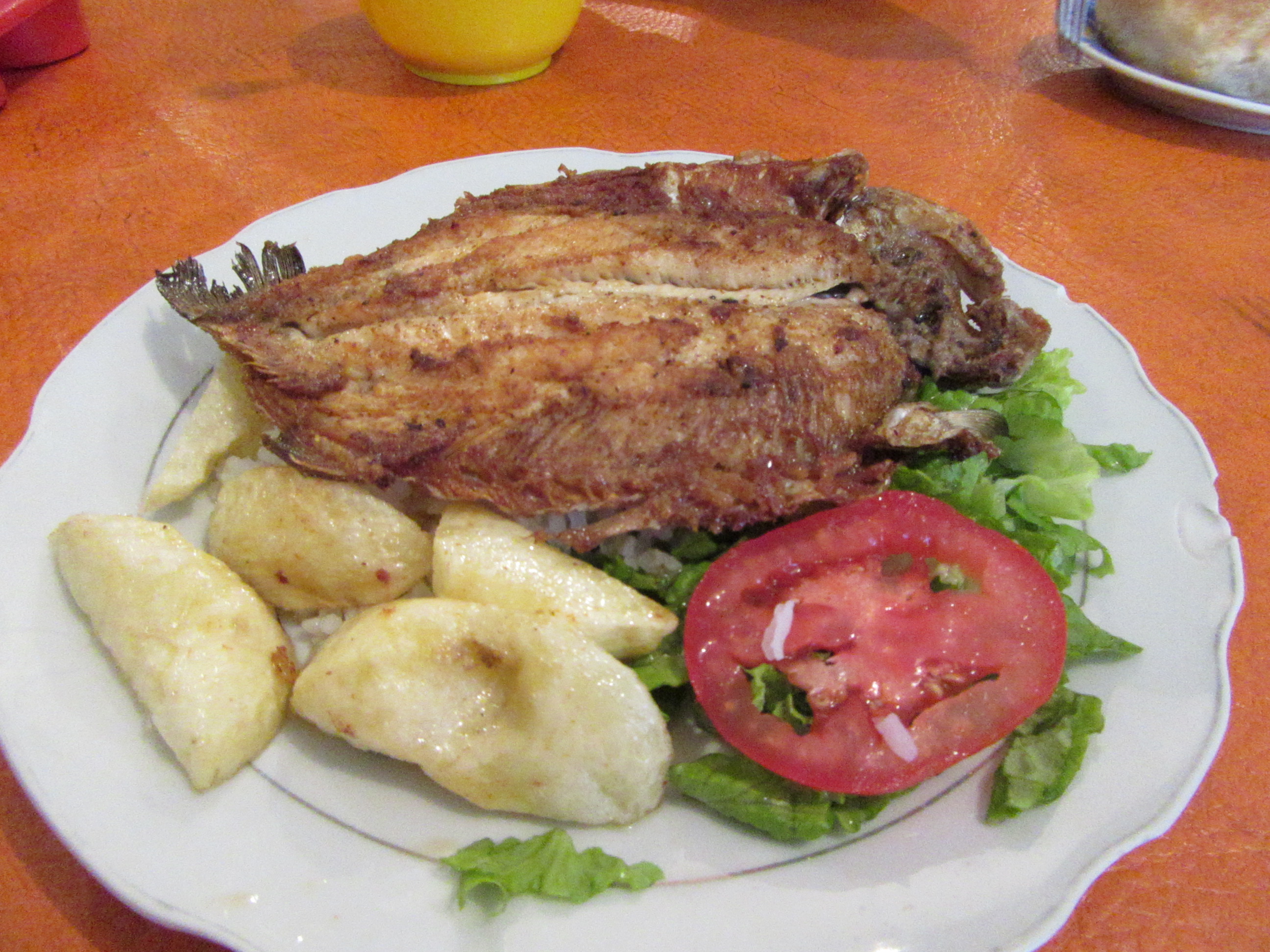
Jugos
I believe that it takes three months for someone to feel comfortable in a new place. It wasn’t until Bolivia that I discovered where all this beautiful fresh produce was ending up. It certainly wasn’t the restaurants! In every size town all over South America, women sing their siren call of fresh juices. For less than a dollar women will blend up any number of fruits or vegetables and pour them into second-hand Johnny Rockets milkshake cups. I’ve become hooked on fresh carrot juice. All in a futile attempt to get my five-a-day.
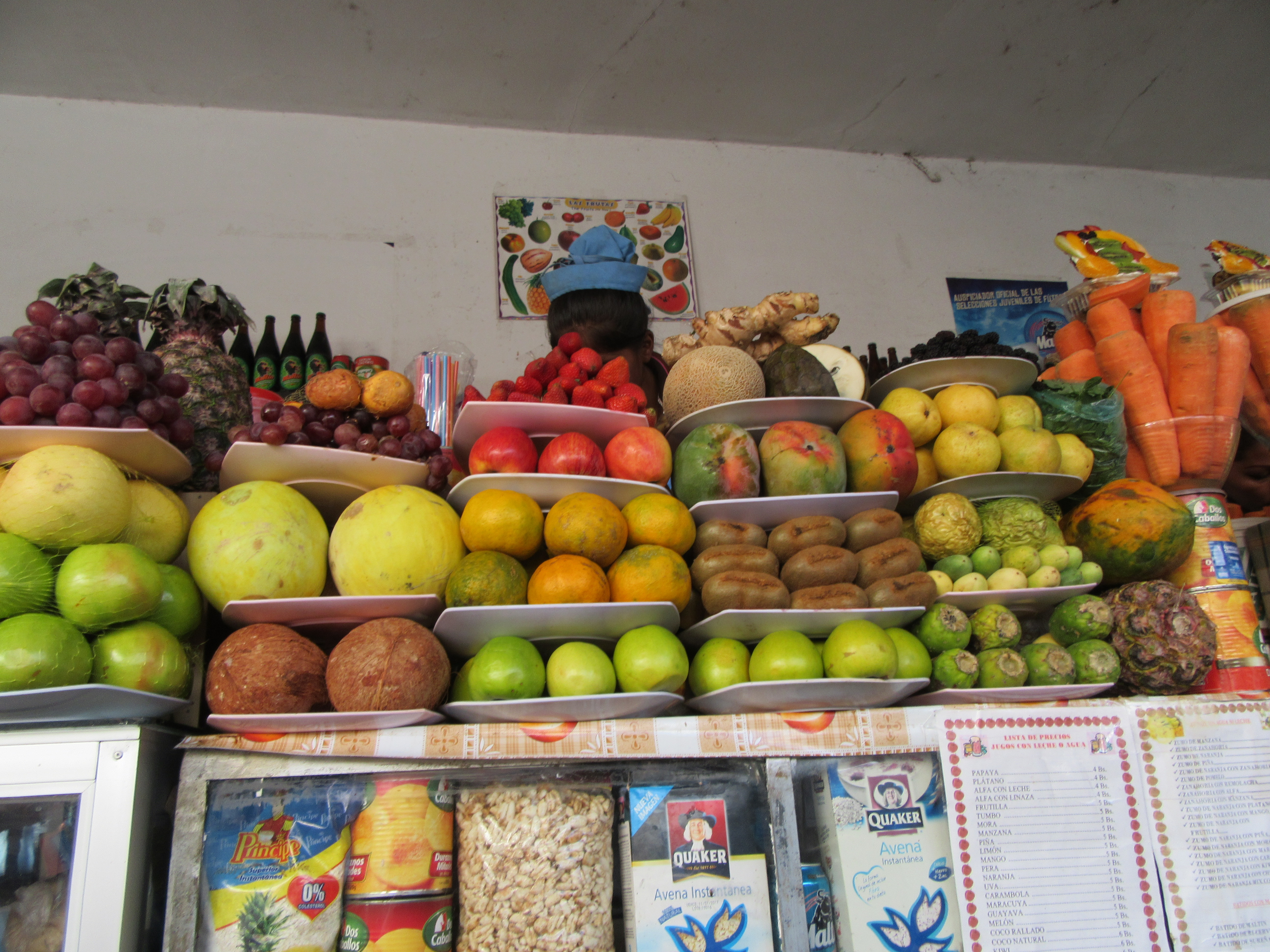
Salteñas
Oh Salteñas, my hot, oily, salty packet of love. Much better than street empanadas thanks to less greasy, fluffy bread and more greasy, crispy bread, the salteña is a staple of Bolivian cuisine. While beef and chicken are the standard flavors, I even found freshly made veggie options to indulge in. These magical hot stew pockets must be held upright or they will gush all over the table. You heard me, gush. These little hand-soups are good enough to gush over.
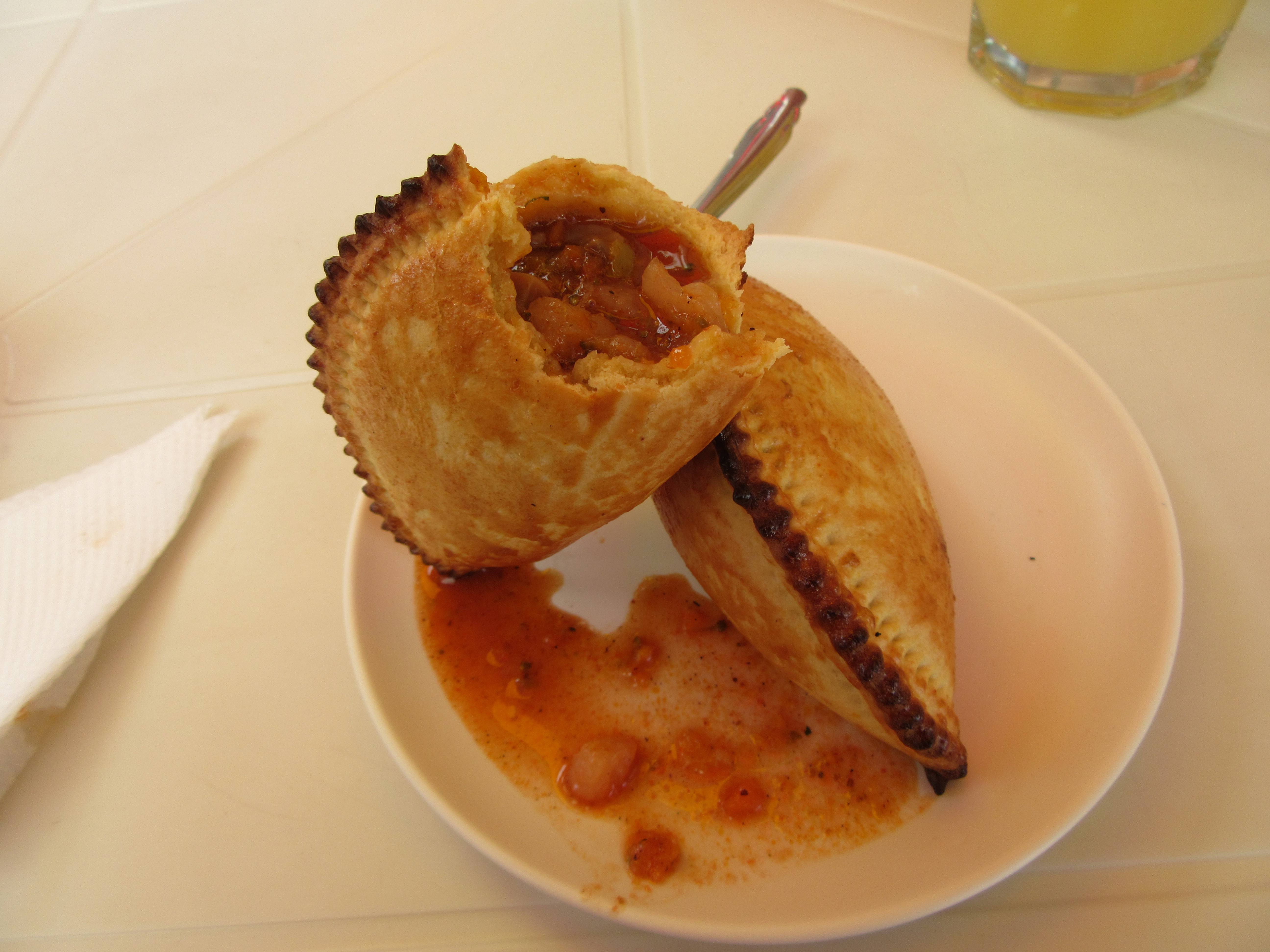
Humitas
Shout out to humitas for keeping Eric and I from starving during Passover. I love humitas so much that I wrote a piece on them and their majestic gatekeeper – find it here. Humitas are similar to tamales and made of fresh cornmeal either steamed or baked. The baked ones taste like nice corn bread but the steamed ones are the real stars. They are made with cinnamon, raisins and lard. They’re a great choice for filling you up to the point of pain. I would love to find a local humita lady in Austin. Can anyone match Bolivia’s prices at two for less than a dollar?
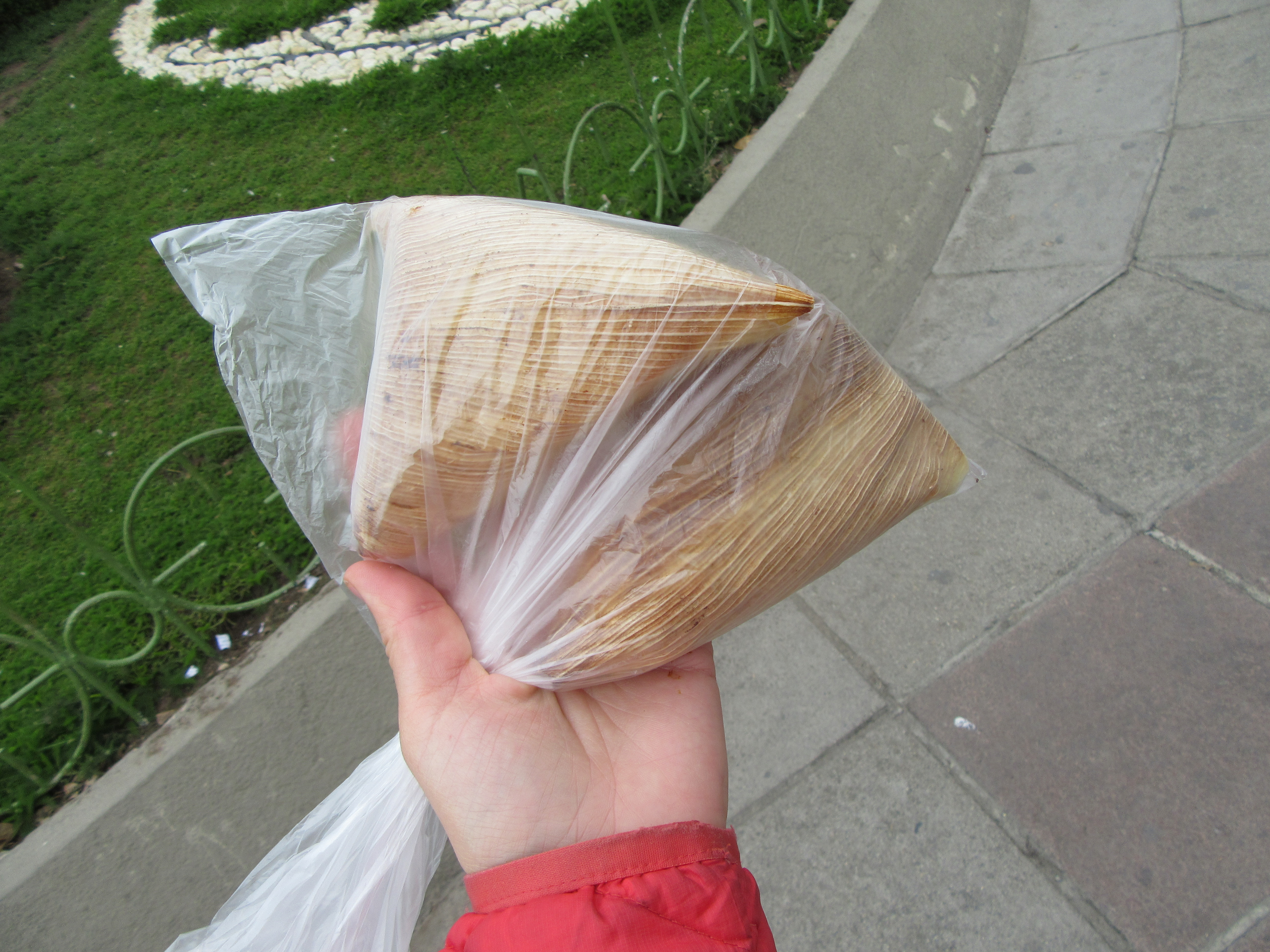
Api
How many different way can I consume corn and potatoes? Bolivia is really pushing the envelope on the carbs masquerading as vegetables front. Api is ground purple corn mixed with pineapple, clove, cinnamon and water. This is heated up to a warm thick porridge which is served at breakfast. It’s usually served with a piece of dough right from the fryer. Bolivians like a hearty breakfast to help them get out the door and on with their day.
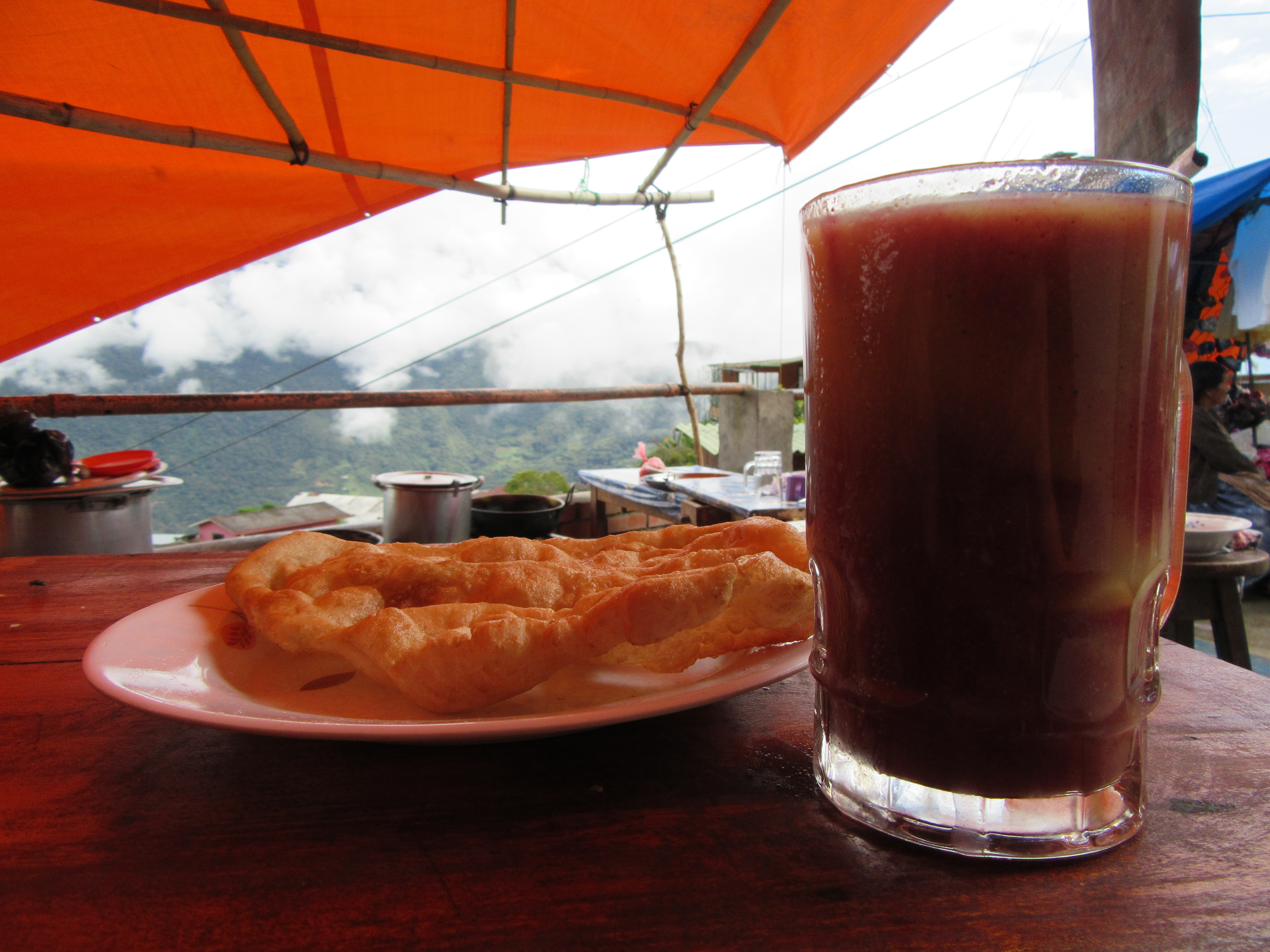
Peach “Juice”
I kept seeing cups of light orange liquid on every street corner. Cholitas in endless petticoats and starched pastel straw hats set them out on tables covered by little silver plates to prevent the bees from drowning in its sweetness. The juice is mixed with cloves and cinnamon. It’s saccharine but pleasant. The best part of these roadside juices is that each glass is served with a dehydrated peach at the bottom which has plumped up by the juice and tastes like gummy candy.
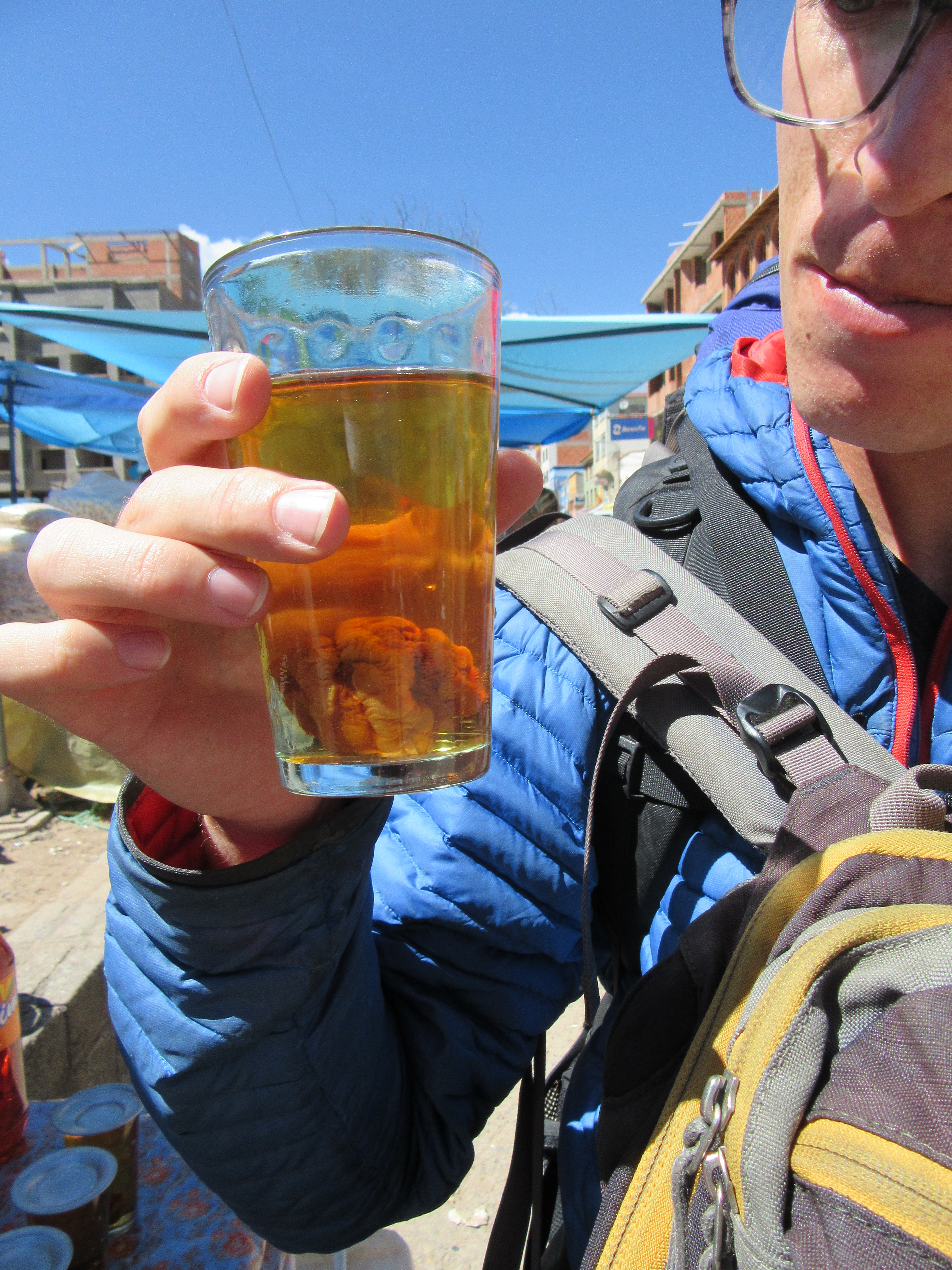
Magical Starch Balls
In Corioco Eric and I we’re on a hunt for a meal lighter than the standard soup and meat and rice and Jello standard. We walked past a woman selling what I thought to be Papas Rellenas, stuffed potatoes, but was in fact was beef, chicken and hard-boiled eggs wrapped in mashed yuca and then pan fried. This monstrous softball sized “snack” is served with ahi, cucumber relish or spicy peanut sauce. I am sure it was 1,500 calories but it was absolutely delicious. I didn’t get a picture of these, so just imagine their glory.

Be First to Comment